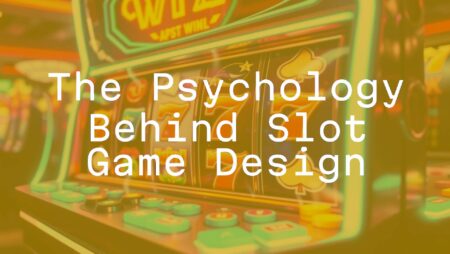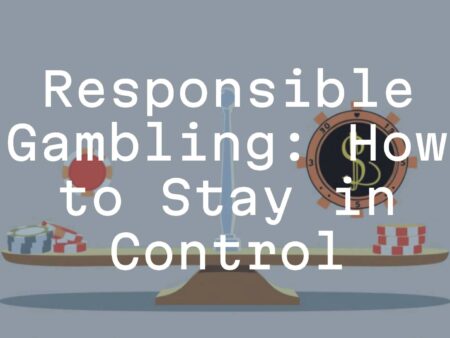

Slot games go far beyond just spinning reels and flashing symbols; they are carefully planned experiences that combine technology with how our minds work. The secret behind their attraction, whether in busy casinos or on small phone screens, is rooted in basic human desires and how our brains function. By tapping into these natural tendencies, slot games create a loop that keeps people playing and entertained. This article will explain the basic psychological tricks behind slot game design and how developers use these methods to make slot games appealing and hard to stop playing.

Every part of a slot game, from the lights and sounds to how you press the spin button, is purposeful. Knowing how design and psychology work together helps explain why slot machines are so popular everywhere today.
Why Do Players Get Hooked on Slot Games?
Developers use specific design features based on psychology to keep people interested. Slot games are built to appeal to our natural need for fun, rewards, and feeling like we’re moving forward. This goes beyond just luck-the games pull in players with elements that make them want to keep spinning.
The Draw of Uncertainty and Waiting
People want to solve uncertainty, and slot games use this. Each spin promises that a win could come soon but never tells when. This keeps players waiting in excitement, which is a big reason online slots are so gripping. Wondering if the next spin will be a jackpot is a unique thrill.
Game creators know that the excitement of “almost” winning is what makes slots so addictive. Slot machines use a reward system where wins seem random. This randomness doesn’t push people away-instead, it makes every spin feel like a drama that could end in a big win any time.
Instant Feedback and Immediate Rewards
Slot games are built for instant pleasure. Any win, even a tiny one, releases dopamine in the player’s brain. Dopamine makes people feel good and want to keep going. To help this, slots often give small, quick wins to keep players in the game.

It’s not only about money. When a player wins, the game makes the experience exciting with flashing lights, lively sounds, and fun graphics. These moments stick in the brain, making players remember the good feelings, sometimes for years.
Emotional Triggers and Brain Tricks
Slot games play with your mind. Our brains want to find patterns, even when none exist. Many slots show patterns that seem complex, making it look like skill is involved. This gets players thinking, even though the results are simply random.
People also ignore the fact that slot machines are designed to eventually pay out less than players put in-they keep playing because the hope of a big win makes them forget the odds. This mental conflict lets people keep playing even when they know losing is likely.
How Do Psychology Rules Influence Slot Mechanics?
What happens behind the scenes in slot games is planned to take advantage of basic human reactions. This keeps players engaged and playing for longer periods.
How Random Number Generators (RNGs) Work
Every slot game runs on a Random Number Generator (RNG). These computer programs make sure each result is unpredictable and fair. Most slots use “pseudo-random” methods, meaning they start from a number and then quickly generate results that seem random to players. Common algorithms include the Mersenne Twister and Linear Congruential Generator (LCG).
Rules require these RNGs to be tested by outside labs to prove fairness, and developers depend on these checks to make sure players trust the games. Each spin is separate, so past results never affect future ones-even though players may think otherwise.
Reward Schedules and How Often Wins Happen
Slot machines use what’s called a “variable ratio” reward pattern: payouts come after an unpredictable number of spins. Since the next win could come at any time, players stay engaged, guessing when it’ll happen. Slots often offer frequent small rewards and rare big ones so players don’t get bored or frustrated.

| Type of Reward | Effect on Player |
|---|---|
| Small, frequent wins | Keep players hooked, steady dopamine release |
| Rare, large jackpots | Creates excitement, encourages long-term play |
The “hit frequency” (how often a player wins) is planned so that the game stays fun, not too easy or too hard. The Return to Player (RTP) percentage shows what a player can expect back over lots of plays, but the big win is what keeps most people hoping and playing.
Near Misses and Feeling in Control
Slot machines often show almost-winning lines. These “near-misses” make players feel like they came close to hitting the jackpot, even though it’s just chance. Game makers use reel setups to show near-wins more often, boosting the feeling that a win could happen any time.
Players often believe they have some control-pressing the spin button or picking a bonus game makes it feel like their choices matter, though they really don’t. This sense of control makes people play longer.
Gamification to Boost Interest
Newer slot games include features like levels, goals, and missions. Players can level up and unlock bonuses as they play. There are even storylines, characters, and ways to work with or compete against others, making the game more than just spinning reels.
- Levels/progression
- Storylines/characters
- Leaderboards
- Collaborative play (e.g., jackpots shared with friends)
These features add variety and keep players wanting to stay for the next reward. They also help create a feeling of achievement, not just a chance of winning money.
How Do Sounds and Graphics Affect Players?
Slot games use sights and sounds to make playing feel rewarding and fun. Every detail, from color schemes to music, adds to the player’s experience.
How Sound Affects Mood and Choices
The right sounds can make players feel more excited and happy. Winners often hear loud, happy jingles, making the event more memorable. The music and sound effects match the size of the win, with bigger wins getting bigger celebrations.
Losing spins are usually met with quiet or dull sounds, subtly telling the player a win didn’t happen, while “losses disguised as wins” (when players win less than they bet) often use positive sounds and visuals, making it seem like a win happened anyway.
Visuals: Color, Lights, and Movement
Colors and flashing lights make slot games eye-catching. Winning spins bring explosions of bright colors and shapes, making the win exciting to watch and hard to forget. Even during regular spins, dynamic graphics help keep people’s attention and make play relaxing but still stimulating.
Graphics and Theme Storytelling
Modern slots tell stories and use detailed graphics based on movies, historical events, fantasy, and more. Each theme has its own style, music, and special features. This makes the games more interesting than many classic casino games, giving players a chance to connect with their favorite topics or characters.
What Behaviors Are Common Among Slot Players?
Slot game design leads to certain behaviors, some of which can develop into habits or even issues. Understanding these helps both players and game makers.
Dopamine and the Spin “Rush”
Winning a spin causes the brain to release dopamine, a chemical that feels pleasant. Slot machines are made to keep this process going with frequent, small rewards. Many keep playing simply to feel this rush again, even when losing more than winning.
Habits and Compulsive Play
Because slot machines are easy to play and give quick feedback, people can quickly develop habits. The “zone” or “dark flow” players enter means time passes without notice. Some people play longer than planned as a result, especially if using gaming as a break from stress or worries.
The Belief in Strategy and Luck
Even though winnings are random, slot features make players think they have some influence. The act of pressing “spin” or experiencing “near-misses” supports this idea, along with the brain’s urge to spot patterns in what’s really random. This can lead to superstitions and playing longer, hoping luck will turn.
Community and Social Aspects
Modern slots, especially online, let players interact through leaderboards, team up for jackpots, or chat within the game. Some games reward players for inviting friends or sharing wins, helping form online clubs and communities around favorite games.
What Are the Dangers and Ethical Problems in Slot Game Design?
The ways slot games are designed to entertain can also encourage risky behaviors among some players. Game designers and regulators must be careful in how they build and manage these games.
Encouraging Problem Gambling
Because slot games use psychological tricks to keep players interested, they can increase the risk of compulsive gambling for some. Constant small rewards, near-misses, and immersive play can be especially risky for people trying to avoid stress or negative feelings. This can lead to losing more money and more time than planned.

Issues Developers Face
Developers need to find a balance between fun and fairness. Some design choices, like too many near-misses or highly addictive rewards, might cross the line by taking advantage of players’ weaknesses. Developers should aim to make games that are enjoyable and fair, not ones that encourage harmful behavior.
Using data to adjust games for individual players can make them more fun, but it may also target players who are more likely to have problems, so developers need to be responsible as technology gets more advanced.
Rules and Player Safety
Many laws exist to protect people who play slots. These include making sure odds (RTP) are shown clearly, checking that RNG systems are fair, and allowing people to set limits or block themselves from playing. Despite the rules, regulators and developers need to keep working together, adapting as new types of slot games and features emerge.
How Is Slot Game Design Changing as We Learn More About Player Psychology?
Slot games are always changing as technology and understanding of human behavior grow. The future will likely see even smarter, more personalized slot gaming experiences.
Technology and Custom Experiences
New technology, like Virtual Reality (VR) and Augmented Reality (AR), is starting to change slot games. Players might soon step into 3D environments or see slot features overlaid on real life. Personalization is growing too-AI systems can adjust game themes and rewards to fit each person’s habits, making each game session feel custom-made.
Trends in Player Habits
People are starting to look for more than just spinning reels-they want challenges, goals, and story-based play. Skill-based rounds may become more common, giving players a chance to use ability as well as luck. Social and group-based play, like teaming up for special jackpots, is also expected to grow. Some slot games may use cryptocurrency or NFTs, giving players new types of rewards or ways to own part of the game.
Ideas from Experts
Game developers and psychologists work together to shape the future of slot play. They know that people are motivated by uncertainty and desire for rewards. Experts stress the importance of keeping games fun and safe, making sure entertainment remains the main goal without causing harm. The industry will keep changing as it finds new ways to be creative and responsible at the same time.








